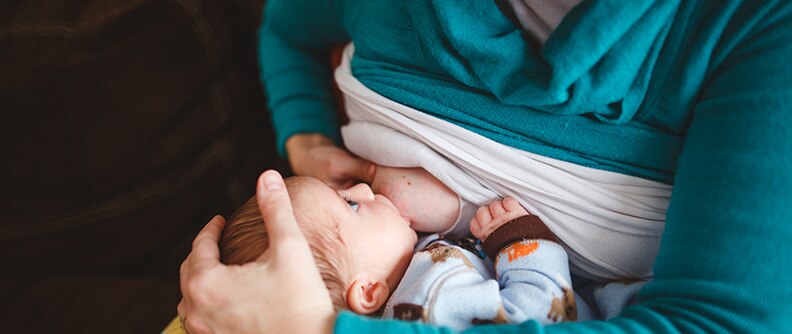Finding the right position to breastfeed/chestfeed can take time. You and your baby will eventually figure out which one works best for you. Many people choose to use more than one position.
Cradle hold
Hold your baby with the arm on the same side as the breast you’re using to feed. Support your baby’s head with your forearm while cradling their back with the rest of your arm. This position is better for older infants who don’t need as much head and neck support.
Cross cradle hold
Also called the transitional hold, this position is good for very young babies, premature babies, or babies who have trouble latching on. You’ll hold your baby with the arm that’s opposite from the breast you’re using to feed. Your arm wraps around your baby’s back with your hand supporting the base of the head.
Clutch hold
When you use the clutch hold, it’s like you’re carrying a football under your arm. Place a pillow under the arm you’ll use. Then, hold your baby close to your side with their feet pointed toward your back. Tuck their knees behind your back and support their head with your hand. The baby’s nose should be level with your nipple.
The football hold is great for twins, babies who have problems feeding, or babies born by Cesarean birth (C-section). This position can also be easier if you have especially large breasts.
Side hold
You can also use a side hold to rest while you’re feeding your baby. Simply lie on your side and use one arm to bring your infant close to you. Hold your breast with your free hand and allow your baby to latch on. This position may be more comfortable after you’ve had a C-section.
Laid back
The laid back hold is also known as an infant led position. By laying back with the baby resting with their belly on your belly the baby can be guided over to the nipple to latch. The baby’s weight is resting on you rather than you holding the baby and they usually have both hands free up by their face. Once baby latches you can cradle your arm under them so they lay cradled by you from the side.
